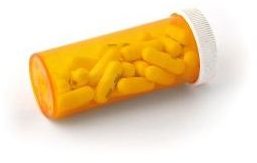Effective PDD Medications
A Word About PDD Medications
Children and adults with various forms of Pervasive Developmental Disorders (PDD) find added benefit and functionality by alleviating certain symptoms with the use of PDD medications. Some medications are used in an “off label” manner, with responses varying from patient to patient. No single medication addresses all PDD symptoms. As a result, patients for whom medication is a viable option find that a combination of medications is often necessary to manage multiple symptoms. Not all patients with PDDs require medication, with many adults needing only minor assistance with symptoms.
Symptoms and Comorbid Disorders
People with PDD often experience symptoms of anxiety, depression, obsessive-compulsive behaviors, lack of impulse control and violent outbursts. Depending on the level of their disability, response to behavioral treatments, and the age at which interventions first began, symptoms may lessen over time.
In some cases, symptoms may present with enough severity to warrant the diagnosis of a comorbid condition. Diagnoses such as social phobia, generalized anxiety disorder, or other mental health conditions in conjunction with a PDD diagnosis are common. No matter if symptoms stem from a PDD diagnosis or present as part of an additional disorder, the use of PDD medications helps alleviate symptoms, allowing patients to live a more productive, less restrictive lifestyle.
The Medications
The use of medications to treat PDD symptoms and comorbid disorders includes antidepressants, antipsychotics (neuroleptics,) mood stabilizers, anti-seizure medications, psychostimulants, or even a combination of these medications. The following outlines each class of medication and what symptoms each class targets. Naturally, there is no way to accurately predict the effectiveness of these medications for a particular individual. However, they have statistically proven useful for a vast majority of patients with PDDs.
Antidepressants
Antidepressants are used to treat both depression and anxiety. Common types include SSRIs, MAOIs, SNRIs, and others. Each type of antidepressant works on different brain chemicals. For example, SSRIs (Selective Serotonin Reuptake Inhibitors) include Paxil, Prozac, and Zoloft. These medications help with depression, anxiety, and obsessive-compulsive behaviors in PDD patients by adjusting the level of serotonin in the brain. SNRIs (Serotonin and Norepinephrine Reuptake Inhibitors) such as Effexor affect both serotonin and norepinephrine to alleviate depression and generalized anxiety disorder.
Antipsychotics (Neuroleptics)
Antipsychotics include first generation (typical antipsychotic) medications like Thorazine and second-generation (atypical antipsychotic) medications like Risperdal and Zyprexa. These medications first emerged to treat symptoms of schizophrenia and bipolar disorder. However, by targeting brain chemicals such as serotonin, dopamine, and norepinephrine, medical professionals found these medications reduced aggressive and psychotic-like behaviors in patients with PDD as well. Side effects, however, include weight gain, high triglyceride levels, and cardiovascular side effects like high blood pressure.
Mood Stabilizers and Anti-seizure Medications
A class PDD medications known as mood stabilizers addresses aggressive behaviors, severe depression, or mood swings. Like typical and atypical antipsychotics, these medications were originally developed for use in mental disorders like bipolar, and others were developed for use with epilepsy patients to control seizures. While an “off label” use, some PDD patients gain relief from severe symptoms, include obsessive compulsive behaviors, aggressive behavior, severe depression, severe anxiety, or hyperactivity. Medications in this category include Lithium, Depakote, and Tegretol and often require regular blood work to monitor for complications.
Psychostimulants
Psychostimulants are most commonly associated with the treatment of ADD or ADHD. Medications include Ritalin, Adderall, and Concerta. These stimulants increase the levels of dopamine and norepinephrine in the brain to control impulsive behaviors and increase attention span. In some cases, as PDD medications, stimulants help reduce disruptive, aggressive, or oppositional behaviors, in addition to helping with impulse control and attention.
References and Resources
Autism Help, Antipsychotics and Autism: https://www.autism-help.org/points-medication-antipsychotics.htm
The University of Illinois at Chicago, Psychopharmacotherapy at Your Fingertips: https://www.psych.uic.edu/pmdc/pharmbook.pdf
Image courtesy of stock.xchng
